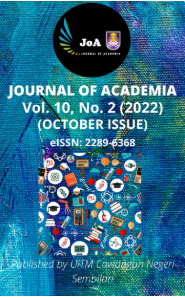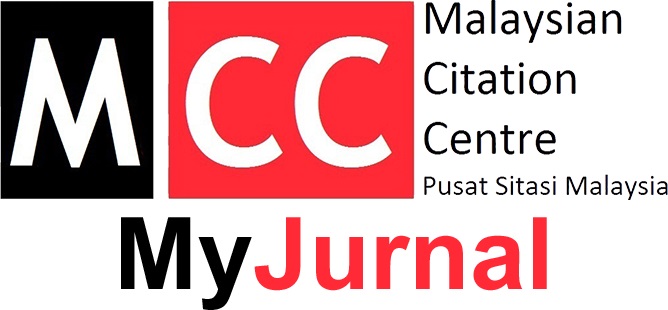EFFECT OF EUTROPHIC WATER ON COLOR AND REPRODUCTION OF COMMON DUCKWEED, Lemna minor (Araceae: Lemna)
Keywords:
Lemna minor, eutrophication, concentration of phosphate, reproduction, colorAbstract
A type of water pollution with the excess amount of nutrients is defined as eutrophication. People
seem to take the phenomenon inconsequential matters due to rarely news hear about the consequences
of eutrophication. Lemna minor purify the water contaminant and act as indicator. Since there is small
extent to which people know about the effect of eutrophication towards the common duckweed, this
study has been conducted. The aim of this research to measure the concentration of phosphate that led
to eutrophication from different types of water sources and to determine impact of different type of
water sources on the reproduction of new fronds and color of Lemna minor. The results revealed that
fertilizer run-off has the highest reduction of phosphate concentration with 50 ppm (28.74%). While,
the highest removal efficiency of phosphate concentration were found with 55.17% for fertilizer run
off in comparison to the removal efficiency of phosphate concentration 42.85% and 0% in tap water
and leachate sample respectively. The observed changes in fronds color of all water samples shows
that they lost the chlorophyll due to its maturity and salt stress at different types of water samples.
Results showed that tap water produced the highest number of new fronds compared to fertilizer run
off and leachate sample. In conclusion, the concentration of phosphate that lead to eutrophication
from different type of water sources and the impact of different type of water sources on the
reproduction of new fronds and color of Lemna minor was obtained.
References
References
Aoki, I. (2012). Ecological communities. Entropy Principle for the Development of Complex Biotic System,63
Bashir, I., Lone, F. A. Bhat, R. A., Mir, S.A., Dar, Z. A., Dar, S. A. (2020). Concerns and threats of
contamination on aquatic ecosystems. Bioremediation and Biotechnology, 1, 1-26.
Chakrabarti, R., William, D. C., .Sharma, J. G., Goswami, R. K., Shrivastav, A. K. & Tocher, D. R. (2018).
Mass Production of Lemna minor and Its Amino Acid and Fatty Acid Profiles. Frontiers in Chemistry, 6, 479.
(2018). Duckweed systems for eutrophic water purification through converting wastewater nutrients to high
starch biomass: comparative evaluation of three different genera (Spirodela polyrhiza, Lemna minor and
Landoltia punctata) in monoculture or polyculture. Royal Society of Chemistry.
Daud, M. K., Ali, S., Abbas, Z. & Zaheer, I. E., Riaz, M. A., Malik, A., Hussain, A., Rahman, M., Zia-ur
Rehman, M., & Zhu, S. J. (2018). Potential of Duckweed (Lemna minor) for the Phytoremediation of Landfill
Leachate. Journal of Chemistry, 2018, 63-71.
Häder, D-P., & Erzinger, G. S. (2018). Introduction. In Bioassays, 1-20.
Haseena, M., Malik, M. F., Javed, A., Arshad, S., Asif, N., Zulfiqar, S., & Hanif, J. (2017). Water pollution and
human health. Environmental Risk Assessment and Remediation, 1(3), 16-19.
Hassan, M. R., & Chakrabarti, R. (2009). Use of Algae and Aquatic Macrophytes as Feed in Small-Scale
Aquaculture. A Review. Food and Agricultural Organization Fisheries Technical Paper, 531.
Hautier, Y., Zhang, P., Loreau, M., Wilcox, K.R., Seabloom, E. W., Borer, E. T., Byrnes, J. E. K., Koerner, S. E.,
Komatsu, K. J., Lefcheck, J. S., Hector, A., Adler, P. B., Alberti, J., Arnillas, C. A., Bakker, J. D., Brudvig, L. A.,
Bugalho, M. N., Cadotte, M., Caldeira, M. C., Carroll, O., Crawley, M., Collins, S. L., Daleo, P., Dee, L. E.,
Eisenhauer, N., Eskelinen, A., Fay, P. A., Gilbert, B., Hansar, A., Isbell, F., Knops, J. M. H., MacDougall, A. S.,
McCulley, R. L., Moore, J. L., Morgan, J. W., Mori, A. S., Peri, P. L., Pos, E. T., Power, S. A., Price, J. N.,
Reich, P. B., Risch, A. C., Roscher, C., Sankaran, M., Schütz, M., Smith, M., Stevens, C., Tognetti, P. M.,
Virtanen, R., Wardle, G. M., Wilfahrt, P. A., & Wang, S (2020). General destabilizing effects of eutrophication
on grassland productivity at multiple spatial scales. Nature Communications, 5375.
Hrycik, A. R., Almeida, Z. L., & Hook, T. O. (2016). Sub-lethal effect on fish provide insight into a
biologically-relevant threshold of hypoxia. Oikos, 126 (3), 307-317.
Iqbal, J, Javed, A., & Baig, M.A. (2019). Growth and nutrient removal efficiency of duckweed (Lemna minor)
from synthetic and dumpsite leachate under artificial and natural conditions. PLoS ONE, 14(8).
Iqbal J. & Baig, M.A. (2017). Nitrogen and phosphorous removal from leachate by duckweed (Lemna minor).
Environment Protection Engineering, 43(4), 123-134.
Istvánovics, V. (2009). Eutrophication of Lakes and Reservoirs. Encyclopedia of Inland Waters, 157-165.
Istvánovics,V., Honti,M., Torma, P., & Kousal, J. (2022). Record-setting algal bloom in polymictic Lake Balaton
(Hungary): A synergistic impact of climate change and (mis)management. Freshwater Biology, 67 (6), 1091
Knight, S., Hauxwell, J., & Haber, E. A. (2014). Distribution and abundance of aquatic plant: Human impacts.
Reference module in Earth System and Environmental Sciences, 45-54.
Liu, C., Dai, Z., & Sun, H. (2017). Potential of duckweed (Lemna minor) for removal of nitrogen and
phosphorus from water under salt stress. Journal of Environmental Management, 187(1), 497-503.
Minnesota Pollution Control Agency. (2008). Nutrients: Phosphorus, Nitrogen Sources, Impact on water
quality. - A General Overview. https://www.pca.state.mn.us/sites/default/files/wq-iw3-22.pdf. [Access online 1
December 2019]
Muralikrishna, I. V., & Manickam, V. (2017). Introduction: Water pollution. Environmental Managenment, 1-4.
Ohmiya, A., Hirashima, M., Yagi, M., Tanase, K., & Yamamizo, C. (2014) Identification of Genes Associated
with Chlorophyll Accumulation in Flower Petals. PLoS ONE, 9(12)
Paiha, A. P. (2021). Senescence in duckweed: An interspecific comparison and the influence of temperature,
Bachelor of Science, University of Lethbridge.
Pierre Elliot Trudeau High School. (2013). Effect of Different Types of Fertilizer Run-Off on the Reproduction
of
Duckweed
(Lemna
minor).
http://www.yrdsb.ca/schools/trudeau.hs/library/Documents/En%20%20Science/Resources%20%20Sample%20
Formal%20Lab%203%20%20Effect%20of%20Different%20Types%20of%20Fertilizer%20RunOff%20on%20
the%20Reproduction%20of%20Duckweed.pdf .[Access online 4 December 2019]
Rasalingam, S., Peng, R., & Koodali, R. T. (2014). Removal of hazardous pollutants from wastewaters:
applications of TiO2-SiO2 mixed oxide materials. Journal of Nanomaterials, 2014,42.
Sallenave, Dr. R. & Fomin, Dr. A. (1997). Some advantages of the duckweed test to assess the toxicity of
environmental samples. Clean Soil and Water, 25(3), 135-140.
Spring, (2013). Growth of Spirodela polyrhiza in creek water, distilled water, and tap water. Duckweed
Population, 1-2.
Ström, E. (2010). Leachate treatment and anaerobic digestion using aquatic plants and algae, Master’s Degree,
Linköping University.
Tao, X., Fang, Y., Huang, M., Xiao, Y., Liu, Y., Ma, X.R., & Zhao, H. (2017). High flavonoid accompanied
with high starch accumulation triggered by nutrient starvation in bioenergy crop duckweed (Landoltia
punctata). BMC Genomics, 18(166).
Youcai, Z. (2018). Leachate Generation and Characteristics. Pollution Control Technology for Leachate from
Municipal Solid Waste,1-30
Zhang, K., Chen, Y. P., Zhang, T. T., Zhao, Y., Shen, Y., Huang, L., Gao, X. O., & Guo, J. S. (2014). The
logistic growth of duckweed (Lemna minor) and kinetics of ammonium uptake. Environmental Technology, 35
(5), 562–567.
Downloads
Published
Issue
Section
License
Copyright (c) 2022 Journal of Academia

This work is licensed under a Creative Commons Attribution-NonCommercial-NoDerivatives 4.0 International License.












